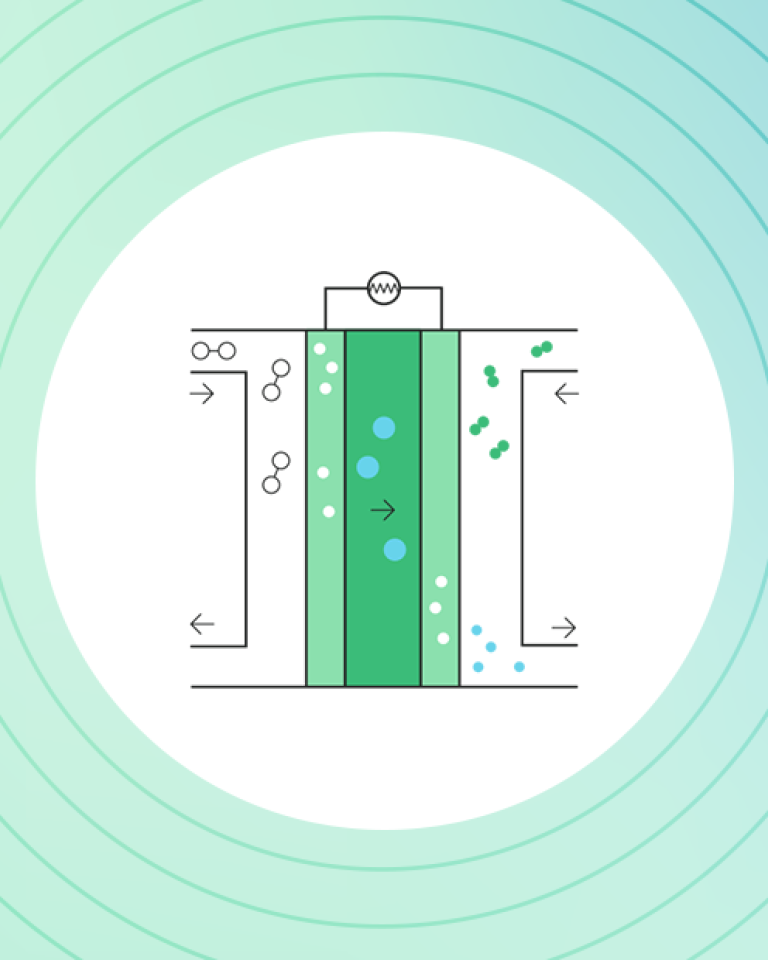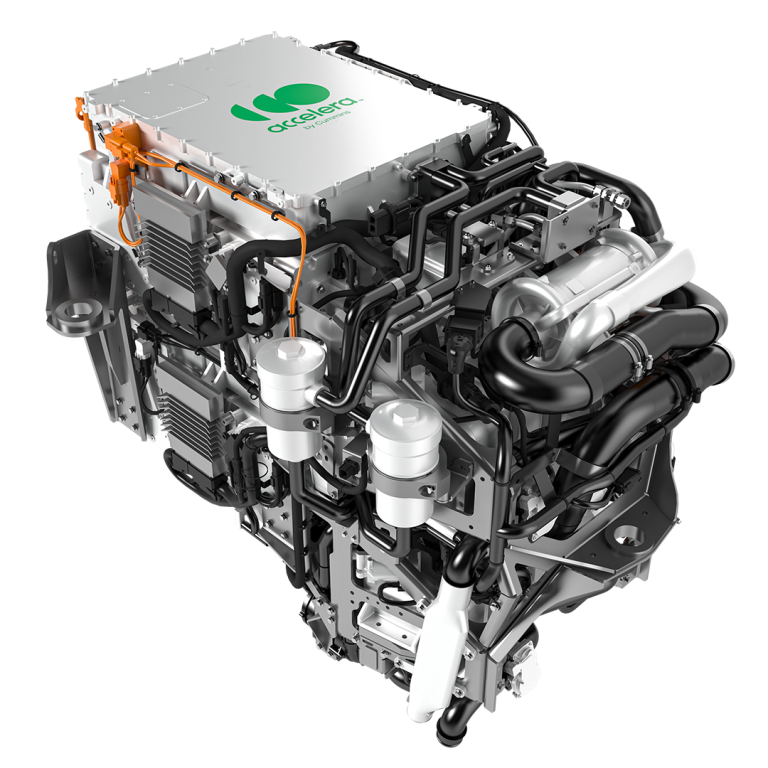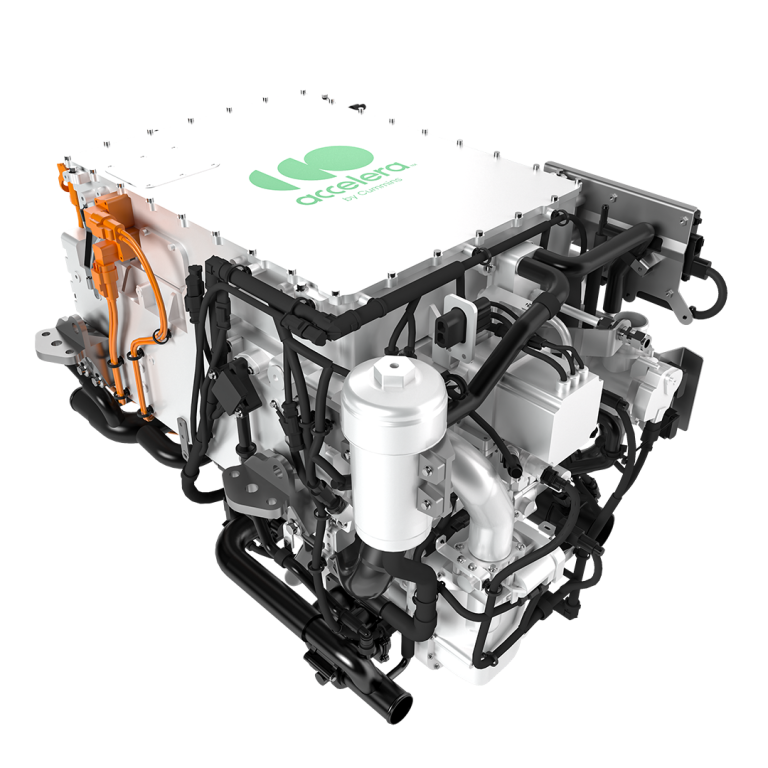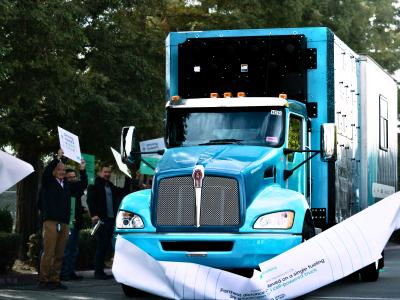Technologies
Fuel cells
Fueling industries with clean power alternatives

Fueling the change
Fuel cells have emerged as an innovative technology that is revolutionizing the way electricity is generated - providing a clean and highly efficient alternative to traditional combustion-based systems. Fuel cells can be described as a special type of battery that generates electricity through a chemical reaction. Unlike traditional batteries that store energy, fuel cells directly convert the energy stored in fuel into electrical power. This makes them an appealing option for various mobility and stationary applications.
Get your "clean" engines running
Perfect for mobile and stationary power applications, our cutting-edge fuel cell technology is turning heads and keeping the industry in motion.

FCE300
Let's transition to 300kW of clean power! Perfect for on- and off-highway applications, Modular by design, our latest generation fuel cell engine has been designed with more power, ease-of-integration and serviceability.

FCE150
Join the clean power movement! Available in flat and tall configurations, the FCE150 ensures ease-of-integration across different platforms, chassis and rack mounts.
Ever wonder how fuel cell vehicles work?
FCEVs operate on a propulsion system like battery-electric vehicles (BEVs), but with the added advantage of a combined hydrogen fuel tank and fuel cell engine. This unique system converts stored hydrogen into electricity through the fuel cell while in operation, supplying direct power to an electric motor(s). The hydrogen is securely stored on board in high-pressure tanks, resembling the storage method used in natural gas-fueled trucks. This innovative design enables FCEVs to maintain a charged battery and provide immediate electricity for the traction system during operation.
A world that's emissions free + within reach
Fuel cell applications
Innovative fuel cell technology delivering decarbonized power for applications that keep the world running.

